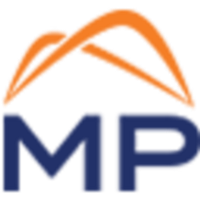
MP Materials Corp
NYSE:MP


| US |

|
Johnson & Johnson
NYSE:JNJ
|
Pharmaceuticals
|
| US |

|
Berkshire Hathaway Inc
NYSE:BRK.A
|
Financial Services
|
| US |

|
Bank of America Corp
NYSE:BAC
|
Banking
|
| US |

|
Mastercard Inc
NYSE:MA
|
Technology
|
| US |

|
UnitedHealth Group Inc
NYSE:UNH
|
Health Care
|
| US |

|
Exxon Mobil Corp
NYSE:XOM
|
Energy
|
| US |

|
Pfizer Inc
NYSE:PFE
|
Pharmaceuticals
|
| US |

|
Palantir Technologies Inc
NYSE:PLTR
|
Technology
|
| US |

|
Nike Inc
NYSE:NKE
|
Textiles, Apparel & Luxury Goods
|
| US |

|
Visa Inc
NYSE:V
|
Technology
|
| CN |

|
Alibaba Group Holding Ltd
NYSE:BABA
|
Retail
|
| US |

|
3M Co
NYSE:MMM
|
Industrial Conglomerates
|
| US |

|
JPMorgan Chase & Co
NYSE:JPM
|
Banking
|
| US |

|
Coca-Cola Co
NYSE:KO
|
Beverages
|
| US |

|
Walmart Inc
NYSE:WMT
|
Retail
|
| US |

|
Verizon Communications Inc
NYSE:VZ
|
Telecommunication
|
Utilize notes to systematically review your investment decisions. By reflecting on past outcomes, you can discern effective strategies and identify those that underperformed. This continuous feedback loop enables you to adapt and refine your approach, optimizing for future success.
Each note serves as a learning point, offering insights into your decision-making processes. Over time, you'll accumulate a personalized database of knowledge, enhancing your ability to make informed decisions quickly and effectively.
With a comprehensive record of your investment history at your fingertips, you can compare current opportunities against past experiences. This not only bolsters your confidence but also ensures that each decision is grounded in a well-documented rationale.
Do you really want to delete this note?
This action cannot be undone.

| 52 Week Range |
10.49
25.66
|
| Price Target |
|
We'll email you a reminder when the closing price reaches USD.
Choose the stock you wish to monitor with a price alert.

|
Johnson & Johnson
NYSE:JNJ
|
US |

|
Berkshire Hathaway Inc
NYSE:BRK.A
|
US |

|
Bank of America Corp
NYSE:BAC
|
US |

|
Mastercard Inc
NYSE:MA
|
US |

|
UnitedHealth Group Inc
NYSE:UNH
|
US |

|
Exxon Mobil Corp
NYSE:XOM
|
US |

|
Pfizer Inc
NYSE:PFE
|
US |

|
Palantir Technologies Inc
NYSE:PLTR
|
US |

|
Nike Inc
NYSE:NKE
|
US |

|
Visa Inc
NYSE:V
|
US |

|
Alibaba Group Holding Ltd
NYSE:BABA
|
CN |

|
3M Co
NYSE:MMM
|
US |

|
JPMorgan Chase & Co
NYSE:JPM
|
US |

|
Coca-Cola Co
NYSE:KO
|
US |

|
Walmart Inc
NYSE:WMT
|
US |

|
Verizon Communications Inc
NYSE:VZ
|
US |
This alert will be permanently deleted.
 MP Materials Corp
MP Materials Corp
MP Materials Corp
In the stark and sun-drenched expanse of the Mojave Desert lies a modern-day treasure, the Mountain Pass mine, operated by MP Materials Corp. This company, emerging as a pivotal entity in the global supply of rare earth materials, orchestrates a finely tuned symphony of mining, processing, and refining operations to meet the increasing demand for high-performance magnets. These magnets are crucial in powering the future, forming key components in everything from electric vehicles to wind turbines and consumer electronics. MP Materials procures rare earth ore from its vast deposits, which is processed on-site to extract valuable rare earth concentrate. This material is essential in the manufacturing of rare earth magnets, holding the promise of technological advances and greener energy solutions.
The business strategy of MP Materials is anchored in vertical integration, capturing value at every step of the supply chain. By controlling activities from mining to processing, the company significantly enhances efficiency and cost-effectiveness. It sells the rare earth concentrate primarily to magnet manufacturers who leverage these materials to produce powerful magnets essential for high-tech applications. As global industries march towards electrification and renewable energy initiatives, the demand for these materials is hoped to soar, positioning MP Materials not just as a mining entity, but as a strategic player in the green economy. This integrated model not only fortifies its revenue streams but also aligns the company with major market trends, ensuring resilience and relevance in an evolving landscape.

In the stark and sun-drenched expanse of the Mojave Desert lies a modern-day treasure, the Mountain Pass mine, operated by MP Materials Corp. This company, emerging as a pivotal entity in the global supply of rare earth materials, orchestrates a finely tuned symphony of mining, processing, and refining operations to meet the increasing demand for high-performance magnets. These magnets are crucial in powering the future, forming key components in everything from electric vehicles to wind turbines and consumer electronics. MP Materials procures rare earth ore from its vast deposits, which is processed on-site to extract valuable rare earth concentrate. This material is essential in the manufacturing of rare earth magnets, holding the promise of technological advances and greener energy solutions.
The business strategy of MP Materials is anchored in vertical integration, capturing value at every step of the supply chain. By controlling activities from mining to processing, the company significantly enhances efficiency and cost-effectiveness. It sells the rare earth concentrate primarily to magnet manufacturers who leverage these materials to produce powerful magnets essential for high-tech applications. As global industries march towards electrification and renewable energy initiatives, the demand for these materials is hoped to soar, positioning MP Materials not just as a mining entity, but as a strategic player in the green economy. This integrated model not only fortifies its revenue streams but also aligns the company with major market trends, ensuring resilience and relevance in an evolving landscape.































 You don't have any saved screeners yet
You don't have any saved screeners yet
